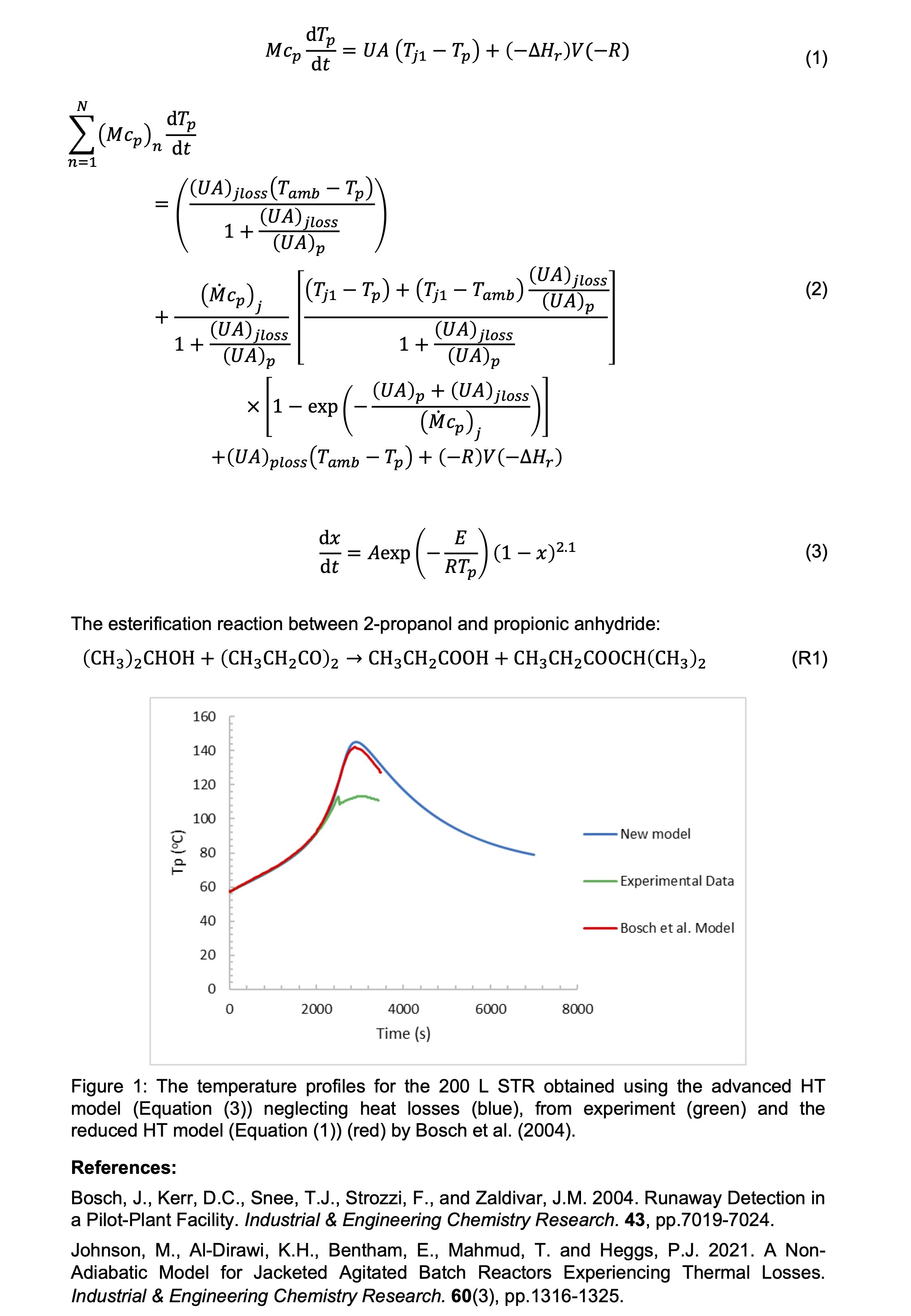(521co) An Advanced Heat Transfer Model for Jacketed Stirred Tank Reactors
AIChE Annual Meeting
2023
2023 AIChE Annual Meeting
Catalysis and Reaction Engineering Division
Poster Session: Catalysis and Reaction Engineering (CRE) Division
Wednesday, November 8, 2023 - 3:30pm to 5:00pm
The traditional approach for modelling the change in the process temperature in STRs is known as the reduced model (Equation (1)). A detailed HT model (Equation (2)) was developed by Johnson et al. (2021), which includes: the variation of jacket inlet temperature; non-uniformity in the jacket fluid temperature; heat losses from the jacket and ullage region and the thermal inertia of the vessel and contents. For this work, the advanced model was further extended to consider chemical reactions and the associated heat generation/consumption and coupled with the reaction kinetics in Equation (3). The esterification reaction (R1) investigated by Bosch et al. (2004) was used as a case study to test the performance of the advanced model. The reaction was conducted in a 200 L jacketed STR with at a constant jacket temperature (70.16 °C). Bosch et al. reported only the overall coefficient, (UA)p, for heat transfer between the jacket and process fluids. The other HT coefficients associated with heat losses ((UA)ploss and (UA)jloss) required in this advanced model are absent. However, Equation (2) can be reduced to Equation (1) by setting these coefficients to zero.
Figure 1 presents the process temperature profiles which were recorded experimentally and predicted using Equation (1) by Bosch et al. (2004) and the new advanced HT model neglecting heat losses. It validates the new model as the curves from both models lie close together. However, both models over predict the temperature peak and this may be improved if heat losses could be accounted for.
